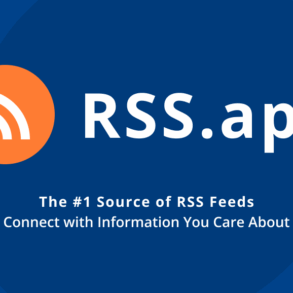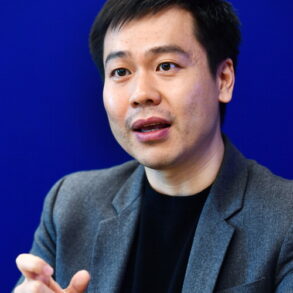
May 16, 2025, 03:03 GMT | Insight
Facebook had massive penetration among social media users and network effects that gave the social media platform an advantage over other rivals which was “not easy” for Google+ to copy, a former Google executive said today in a government monopolization trial brought against Meta Platforms.
The Federal Trade Commission today presented its final witness before resting its case. Meta began presenting its case-in-chief with two witnesses from Snap. Most of the testimony was held in secret because counsel for the tech giant asked the judge to close the courtroom for testimony involving confidential information.
US District Judge James Boasberg has heard five weeks of testimony in a trial where the FTC is asking a Washington, DC federal court to undo the more-than-decade old acquisitions of Instagram and WhatsApp on grounds that they are anticompetitive.
Counsel for the FTC called Bradley Horowitz as the government’s last witness. Horowitz was in charge of the new defunct Google+ social networking site roughly a decade ago. He is now a general partner at Wisdom Ventures, which works with entrepreneurs.
The government displayed an exhibit showing a May 2010 email from an engineering executive at Google+ Andrew Tompkins.
“First, I want to quickly debunk a couple of arguments about why we can build this from scratch,” Tompkins wrote in the email. “Facebook took over from myspace so we can take over from Facebook. myspace didn’t get close to full market penetration. I doubt any of us would say that a significant fraction of our phones were on mypace, but almost all of us would say that about Facebook. When there’s a giant population for whom the network effect doesn’t apply, it’s still anyone’s game. That’s not the case anymore.”
When Horowitz was asked to explain the final sentence of that email, he testified that according to Tompkins, “Facebook had such a penetration, such a vast social graph, that it was no longer up for grabs, that graph had been established.”
Facebook was already the market leader in social networking usage back then, the witness said.
Horowitz said he agreed with Tompkins that Facebook had a network effect because “for every user that was on there, it became more and more compelling for the next user to join. Every user added value to the network itself, and they reached a point of penetration, where it became giant.”
The testimony aimed to show that Google, which was one of the largest companies in the world, spent hundreds of millions of dollars and yet could not establish a personal social network because of Facebook’s network effects and switching costs.
The FTC sought to show that Google launched Google+, a close competitor to Facebook, even though it already had YouTube. Meta argues that YouTube is one of its close competitors.
— Copying Facebook, switching costs —
Facebook had an advantage over competitors like Google+ because a social media user’s friends were on Facebook. Having that many of a user’s friends on Facebook was “not easy for Google+ to copy,” Horowitz testified.
“That’s a challenging thing to copy. What I will add as nuance is a lot of those users were also using Google, but they were using it in single player mode,” he said.
This means those users had not yet given Google permission to find their friends and build a brand. So, while Google also had a lot of the same users that Facebook did, they were “not activated” in such a way it would have been useful in social setting, Horowitz said.
“That transition from single player mode requires a compelling reason,” the former Google executive said.
“Nobody wakes up and says, ‘I think I’ll volunteer my social graph to Google or invest a morning building one’,” he said. “So, there has to be a compelling reason that a user would do that.”
That is the biggest reactivation energy of getting users out of single player mode and into a situation where they are expressing their social graph. This requires a huge amount of lift on a per user basis, he said.
The FTC attorney asked whether it is easy to reconstruct a social network that might exist on another site, like Facebook.
“No, I don’t think it’s easy,” the witness replied.
There are also switching costs associated with reproducing a user’s connections they created over the years on Facebook. Horowitz said the biggest challenge they faced was completeness. For instance, if grandma was an important person to a user and she was on Facebook, but she was not yet activated on Google+, it was very hard to convince someone to build a social graph.
Horowitz gave another example of “completeness” around a family or friends network or a user’s basketball team, saying “if you had a few holdouts that were not yet part of that, it made the sharing much less useful.”
That was the struggle Google+ faced even though it had billions of users.
Google+ was shut down in 2019 but boasted a high number of registered users, estimated to be over 2 billion at its peak. Active users were significantly lower, however.
Horowitz testified that he viewed Facebook’s network effects as a “competitive advantage” for the company.
The witness explained the importance of consistent, active user engagement on a social media platform, saying: “The health of a system is driven by engagement.”
“If nobody is posting, if nobody’s commenting, if nobody’s liking, there’s nothing to do there. It’s a dead party,” Horowitz said.
— Meta’s cross-examination —
During cross-examination, Horowitz testified that while Google+ was shut down in 2019, he hadn’t worked on the project since about 2017 or roughly eight years.
Under questioning, the witness acknowledged there was some unwillingness from teams at Google to help Google+ succeed. There was also variance among teams at Google as to how much they should be helping Google+ or ignore it.
“There were moments when the momentum of the product had swayed some folks,” Horowitz said.
“So, this internal opposition was a problem because Google+ was a product that couldn’t be successful without the active cooperation of all the other products in Google’s orbit. Is that correct?” the Meta attorney asked.
“That’s a little more extreme than I would put it, but in spirit, yes,” Horowitz replied.
The Meta attorney asked whether Google+ did not have the necessary talent to make it a successful standalone product. Horowitz paused and replied that it’s very hard to attribute the lack of success to any single factor.
“Certainly, talent is one of the ingredients that one needs to create a successful product. I’m sure we would have benefited from even more, better talent.”
But the Meta lawyer pressed on the same question, to which Horowitz replied, “I think Google made a determination that Google+ no longer made sense in its product portfolio, that it no longer had the opportunity, talent, resources, the ingredients to get it over the line to viability. And that was after I had left.”
Shortly after the trial day ended today, Meta filed a motion for judgment against FTC, saying the government “has not carried its burden” to prove that Meta is currently violating US antitrust laws (see here).
“The FTC also failed to prove that Meta’s acquisitions of Instagram and WhatsApp had an ‘anticompetitive effect’ and were therefore ‘exclusionary.’ Judgment should be granted for that reason, too,” Meta’s 22-page filing said (see here).
Please e-mail editors@mlex.com to contact the editorial staff regarding this story, or to submit the names of lawyers and advisers.
Tags
This post was originally published on this site be sure to check out more of their content




